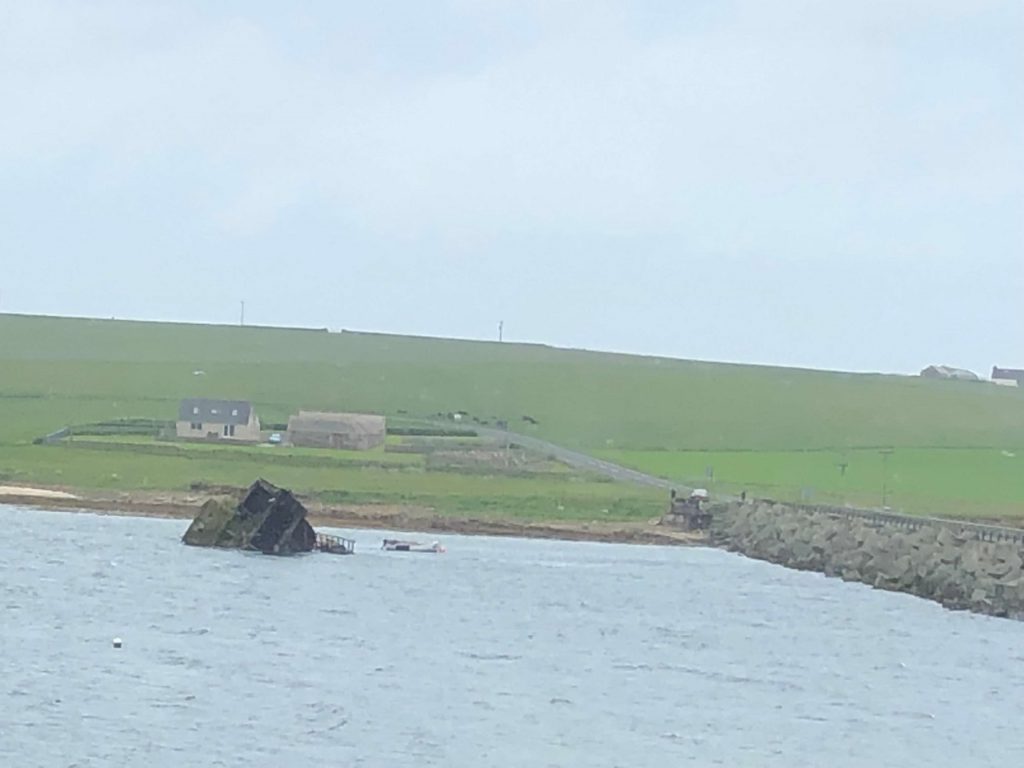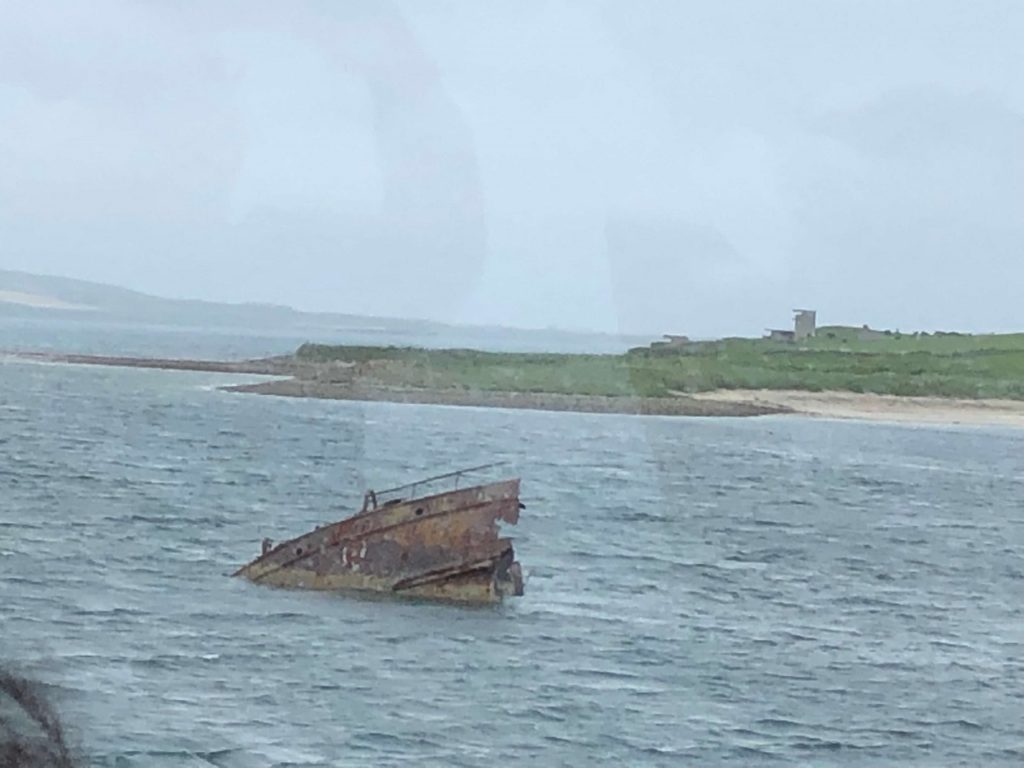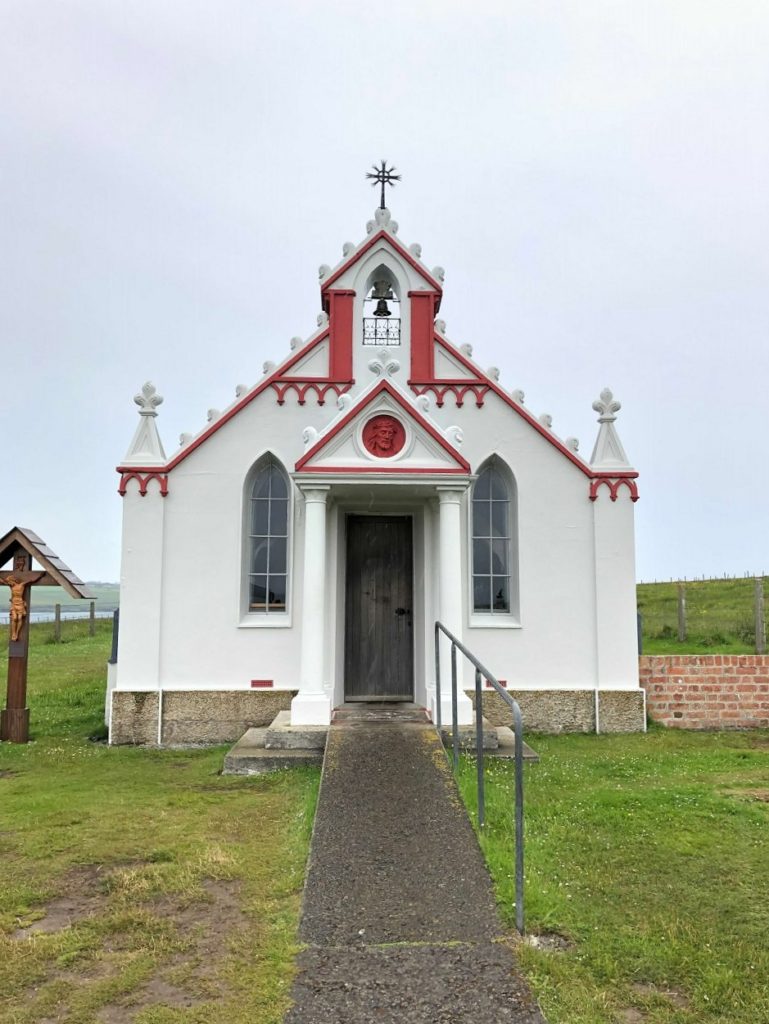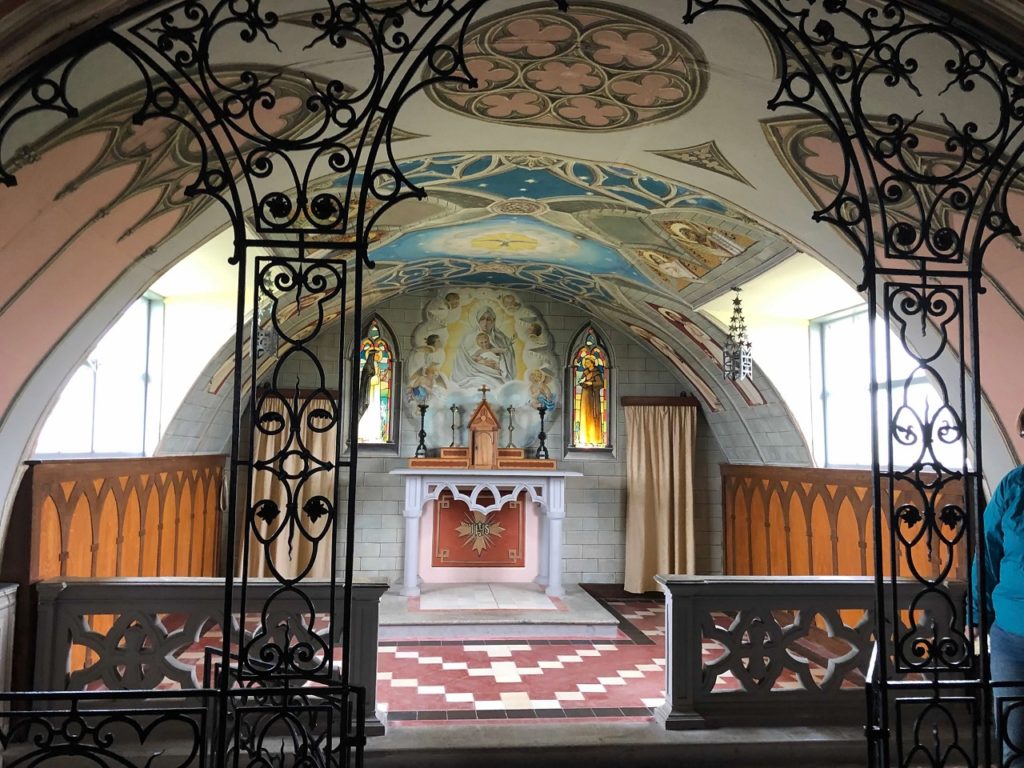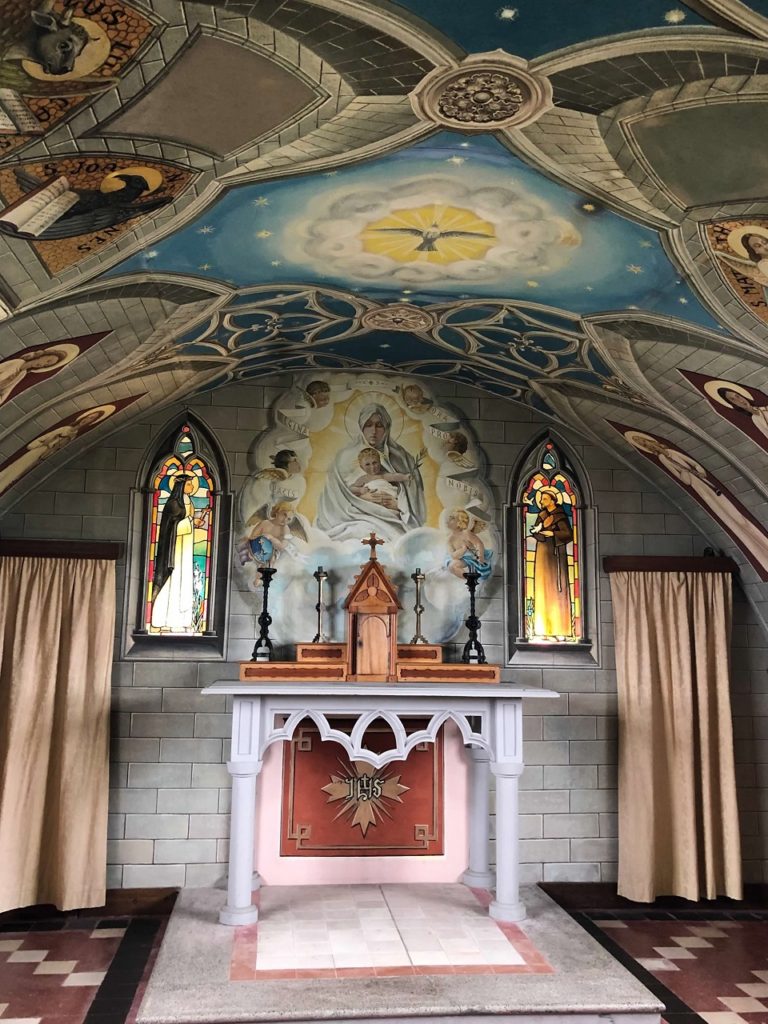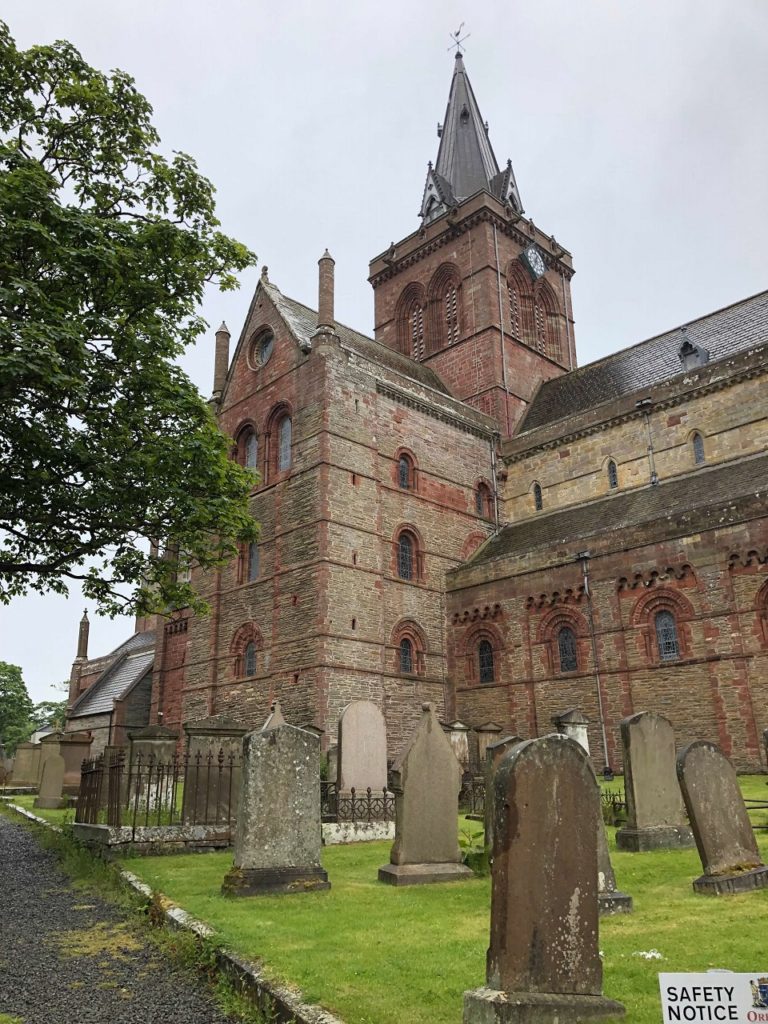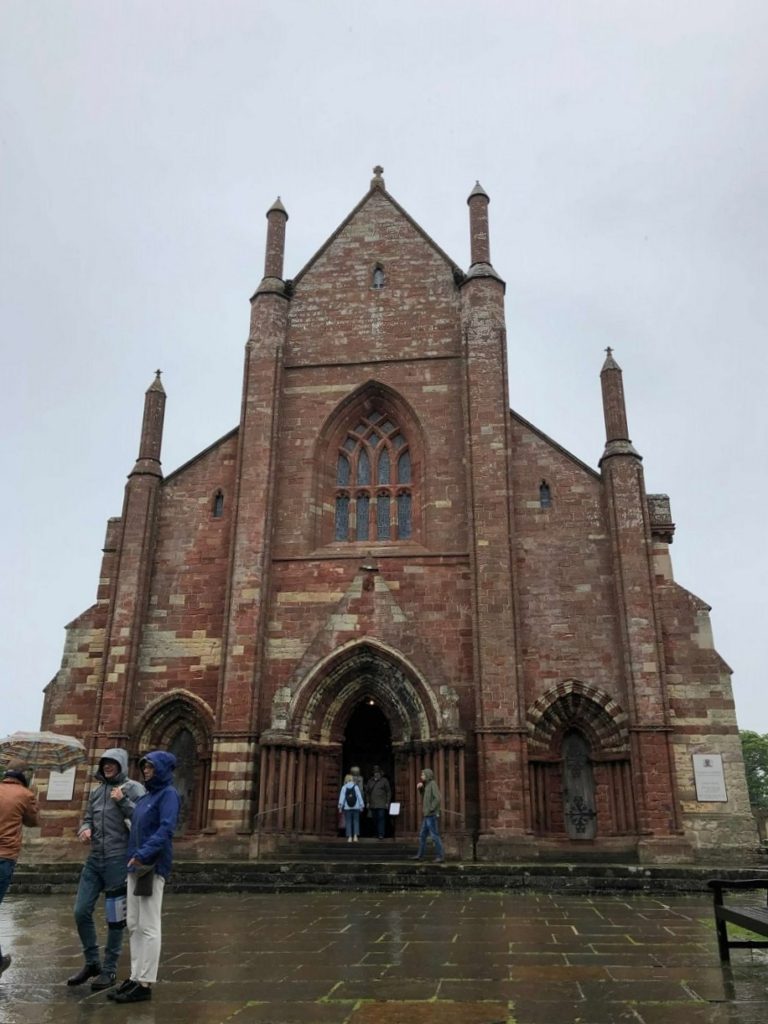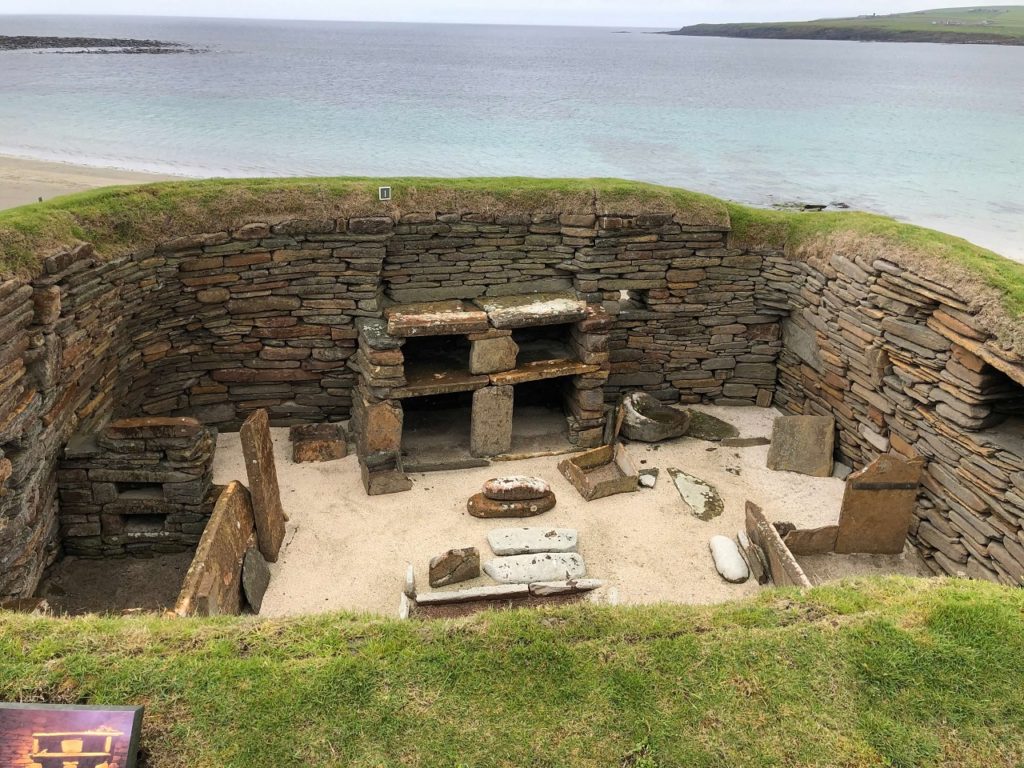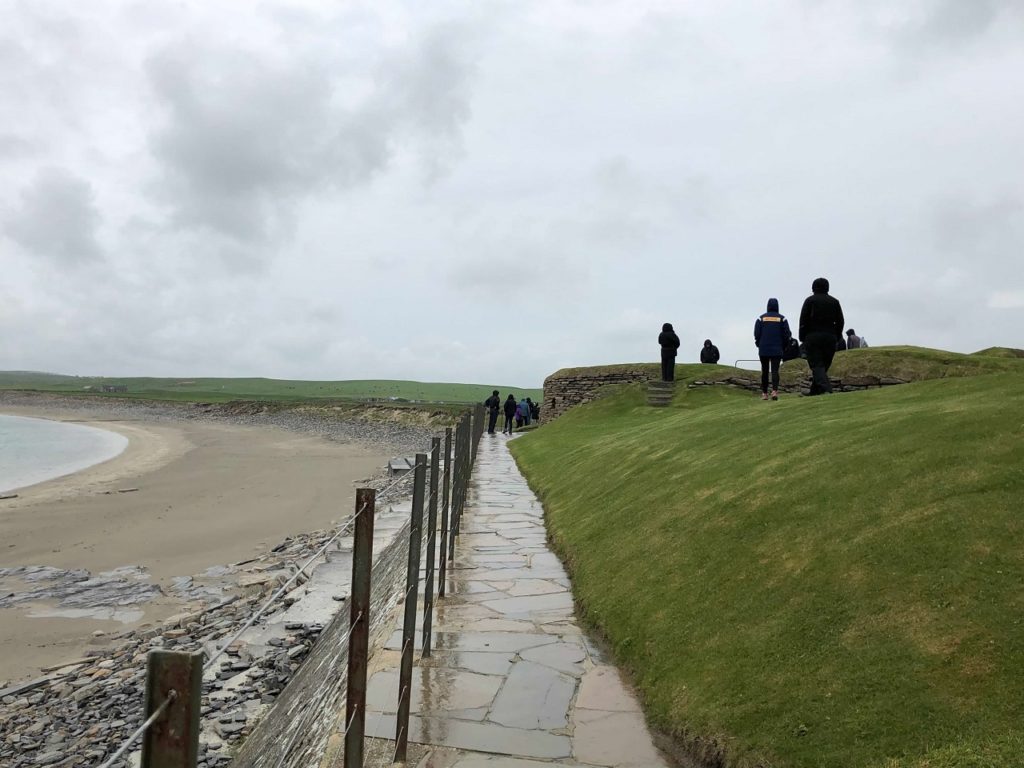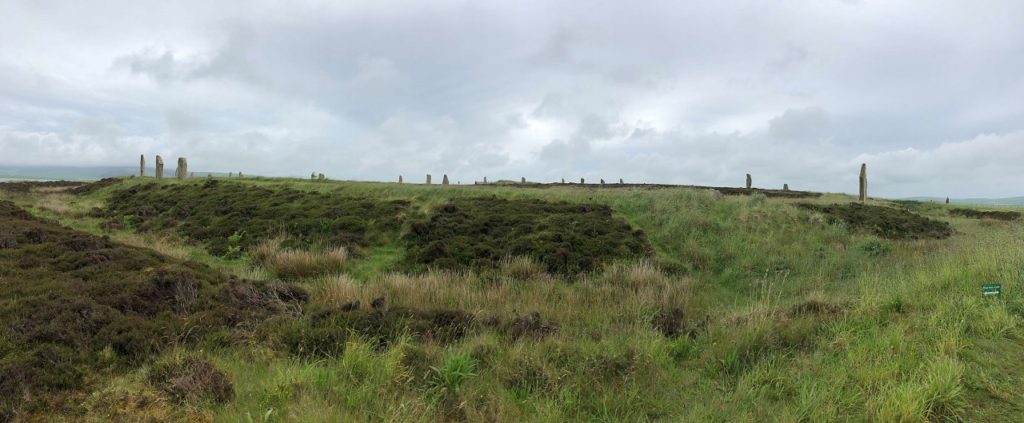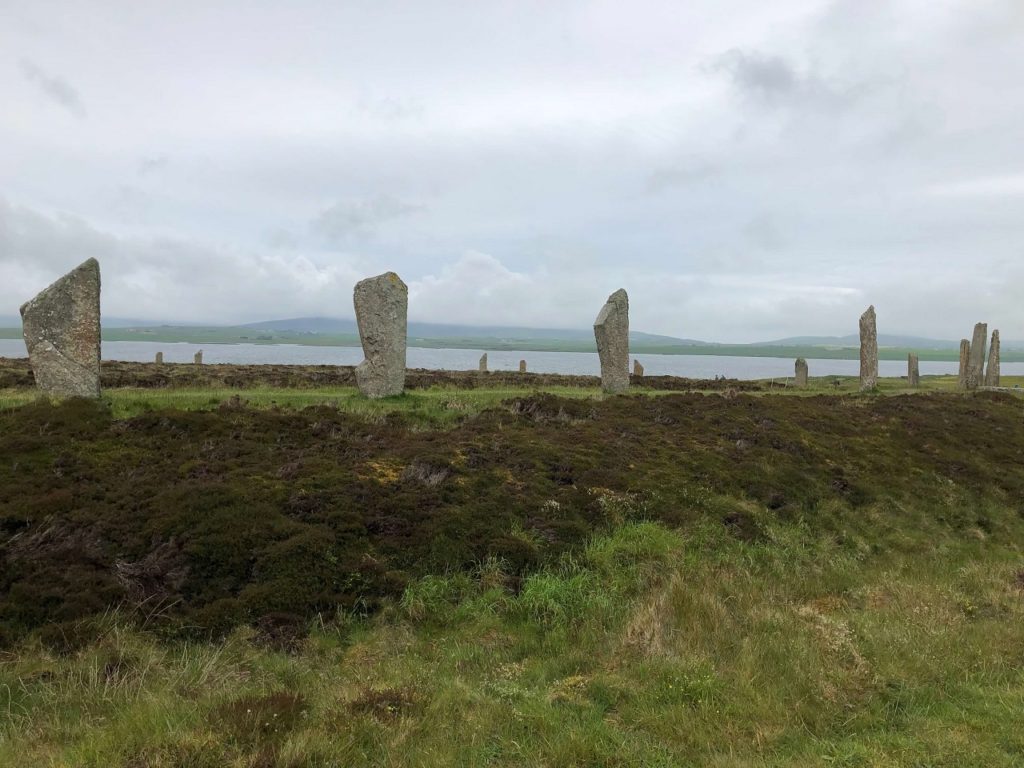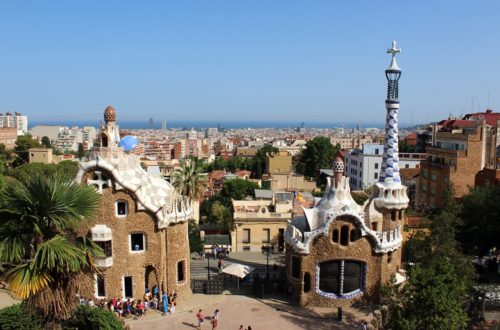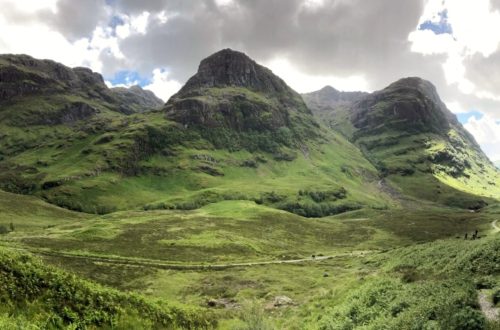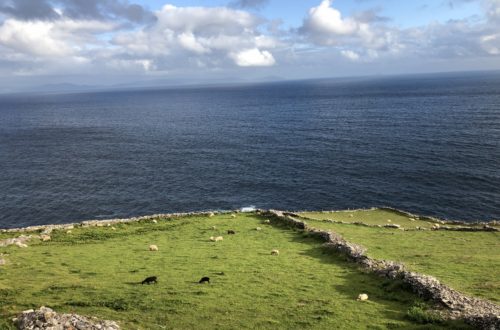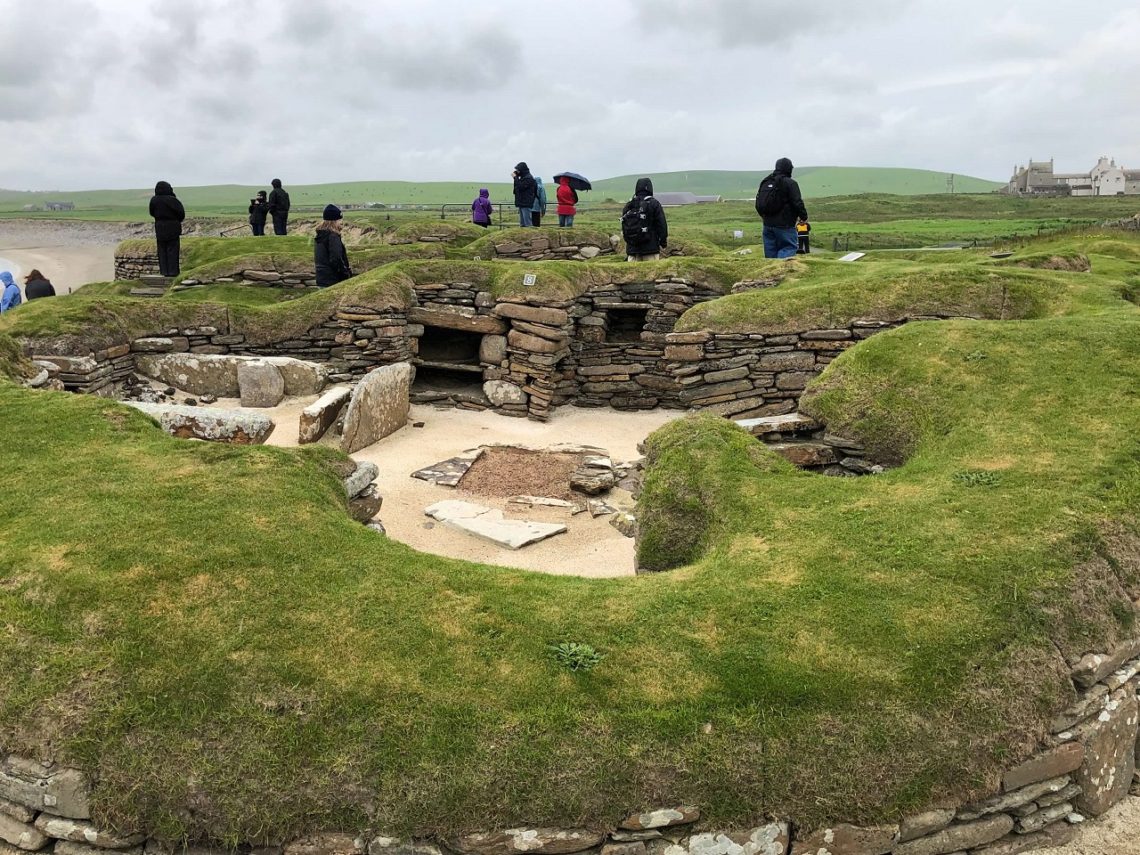
Eight Days from Edinburgh Part 5
Imagine walking along your oceanfront property shortly after a storm to discover that the wind has blown away enough sand that some sort of stone structures are peering out from beneath. This is exactly what happened around 1850 in the Orkney Islands, where I will take you in this post. So for those who love history as much as I do, hang on to your hats, because at 5,000 years old, these are the oldest places I have visited! To give you an idea, they predate the pyramids of Egypt, and had been vacated for several hundred years by the time Stonehenge was built!
Let’s first talk about getting to the Orkney Islands, because this is somewhat of a feat in and of itself. To get to the Orkney Islands, north of mainland Scotland, you have two options: you can fly in, or take a ferry.
Flights to and from Orkney run primarily through Logan Air and a few other major airlines, but are quite expensive in my opinion, and are not such a great carbon footprint. Taking the ferry from mainland Scotland, however, is much more reasonably priced. There are several ferry terminals on the northern coast of Scotland with trips ranging from 40-90 minutes. You can also take a ferry from Aberdeen, not nearly as far north, but it will take you six hours to get there. In non-Covid times during the summer months, you can get the bus from Inverness to John O’Groats (about 3 hours), ferry from John O’Groats to Burwick, Orkney (about 40 minutes), and then take a bus to to Kirkwall (30 minutes) for about £30, and then do the reverse to get back. Be aware that the ferry from John O’Groats is pedestrian only – no vehicles.
I chose for us this time, a guided tour that left from Inverness. You can find it here. I knew my husband would be ready for a break from driving by then. I mean we ONLY put 900 miles on the rental car in Scotland haha! I also wanted him to be able to enjoy the scenery. We only had one day, and this tour hit most of the major sites I wanted to visit.
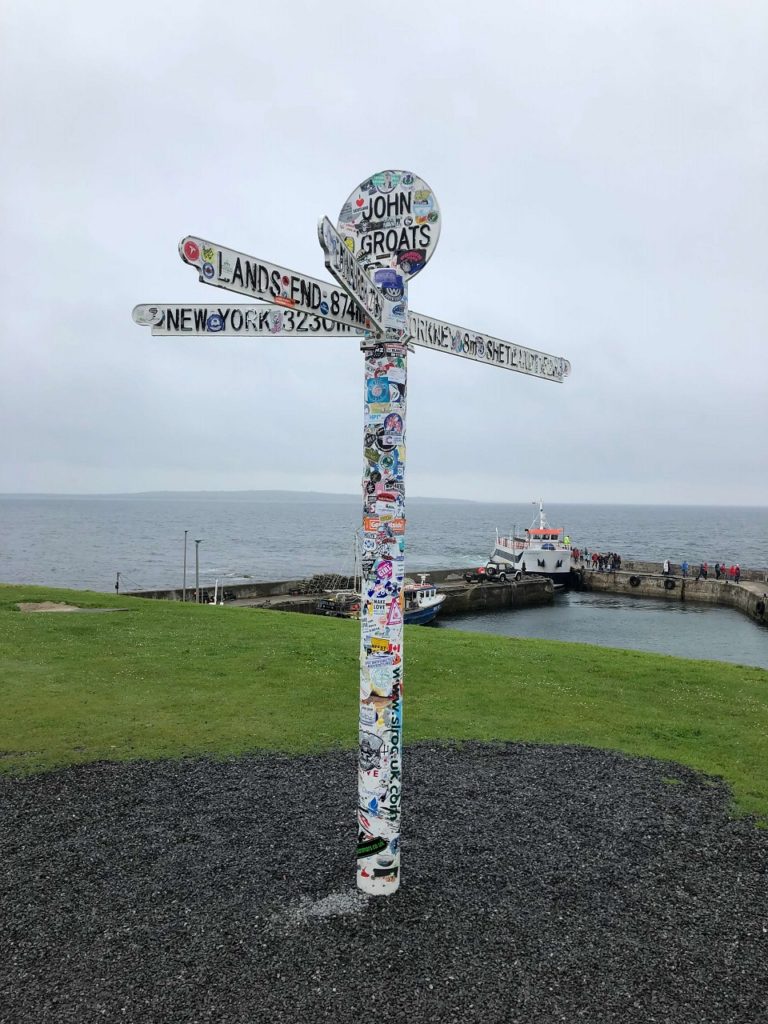
John O’Groats 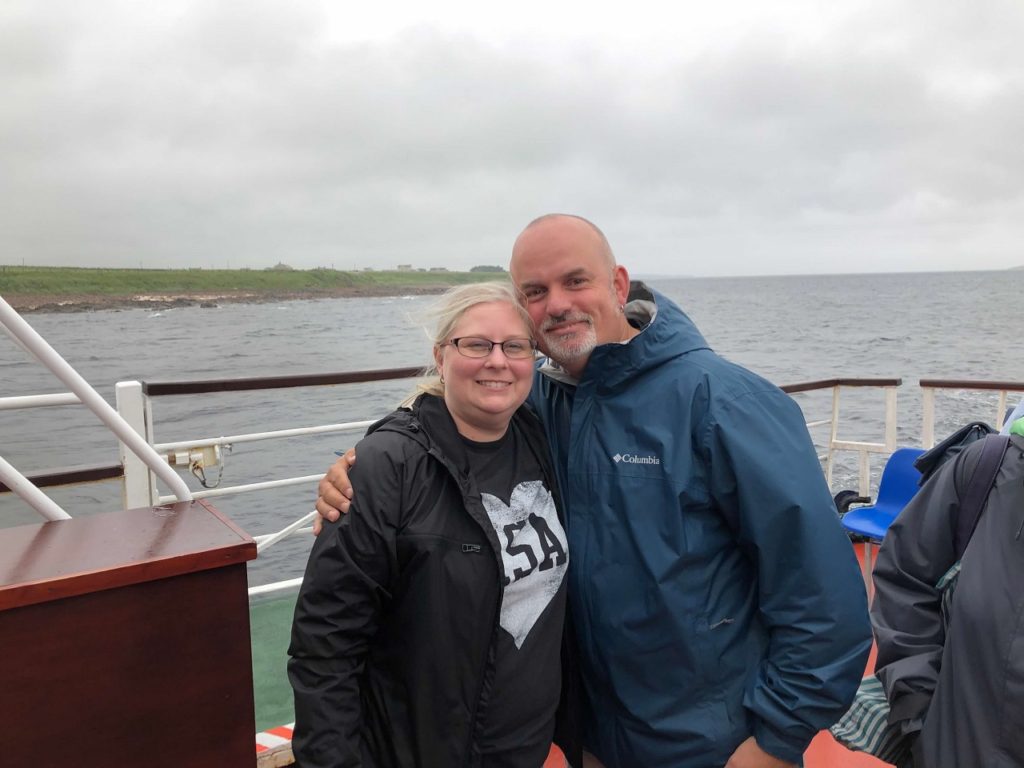
On the ferry to Orkney
If you are going to the Orkney Islands, I would recommend spending several days there, especially if you love history, Orkney is full of it! Our tour took us by bus to John O’Groats where we took the ferry to Burwick, Orkney, and met another bus to tour the island. This process took several hours, and we started early in the morning around 7am. For a small fee, we were able to order lunch (and dinner on the way back) from a menu of sandwiches, which were picked up in one of the towns we drove through, and we ate on the road. After our tour of the Islands, the ferry took us back to John O’Groats to get on the bus back to Inverness later that night. It seems like we got back around 10pm.
A few bits of advice: if you are one who gets motion sickness, I would recommend sitting toward the back of the bus between Inverness and John O’Groats. I know this sounds counterintuitive, but we sat near the front, and I was feeling it by the time we got back to Inverness! And I am not one who typically suffers from motion sickness! I would also be sure to pack a light jacket as it got chilly on the ferry, and a weatherproof one would be even better.
Alright, so back to the tour. Once we arrived on Orkney, we boarded the bus, and our very friendly guide welcomed us with his great sense of humor! He educated us on the history of the Orkney Islands as we made our way from Burwick on South Ronaldsay, across Burray, Glimps Holm, and Lamb Holm, to Kirkwall on Mainland Island. To get there, we drove across the Churchill Barriers which were concrete causeways constructed during World War II to protect Scapa Flow from attack.
Scapa Flow is where the Germans scuttled most of their entire High Seas Fleet toward the end of World War I rather than turn them over to the Allies. It is also where most of His Majesty’s Royal Navy was anchored at the beginning of World War II. It was assumed to be safe as 3 of the 4 channels were blocked by sunken ships. After a German U-boat slipped through, however, in 1939, sinking the Royal Oak battleship and killing 800 men, construction began on the Barriers at the direction of Winston Churchill. The Barriers were built using 5-10 ton concrete blocks, and stretch about a mile and a half in total. Driving along the Barriers, you can see several sunken ships.
Another World War II sight we visited was Orkney’s Italian Chapel which has quite an interesting history of its own. Italian prisoners of war captured in the North Africa Campaign were sent to Camp 60 on Orkney to help build the Churchill Barriers. Several of them were quite talented, and constructed a church for the prison camp. Using two of their huts end to end, they built the church using concrete, plaster, and iron. For a small fee (I think it was £5) you can go inside, and you should. It is beautiful! The altar area of the church is separated from the rest by a very intricate wrought iron screen and gate made by one of the prisoners. Another one of the men in the camp was an artist, and he painted and oversaw the painting of the entire inside of the church. He even stayed beyond their release to finish it!
After the Italian Chapel, we drove on to Kirkwall where we had some time to explore the town and do some local shopping. St. Magnus Cathedral in Kirkwall was founded in 1137 by a Viking and named in honor of his uncle St. Magnus who was martyred in Orkney and is actually buried onsite. It is Britain’s northernmost cathedral. It is typically open to go inside and view, however, there was a concert event being held there the day we visited, so we missed it.
From Kirkwall, we headed to the Western Mainland, where most of that part of the island has been named a UNESCO World Heritage Center. The four main sites that are part of this Heritage Center include Skara Brae, Stones of Stenness, Ring of Brodgar, and Maeshow Chamber, a chamber tomb. I will take you with me to three of the four!
First and my favorite, was Skara Brae. This is a Neolithic settlement, which also happens to be the oldest and best preserved in all of Europe! As I said before, the site is 5,000 years old. The visitor center has a great museum to visit that talks of the history and excavation of the site. Numerous artifacts are on display, including jewelry and tools. The displays clearly delineate between what is known and what is hypothesized, but present both, which I think is fantastic.
Once you head out, behind the visitor center is a replica of what one of the houses would have looked like with the roof intact and lived in. You can enter through a replica passage and roam around. I love sharing this video with my students when we learn about the Neolithic Age! I hope you enjoy it as well. As you can see, they had spaces designated for sleeping, cooking, gathering, and even storage!
As you walk to the archaeological site, you will pass by a timeline etched into the stones that will take you back through 5,000 years of history until you arrive at the site. Skara Brae consists of nine excavated houses, one workshop, and passages that connect all of these structures. Skara Brae is unique in this feature of the stone tunnels connecting the units. None of the other sites that have been located since have shared this feature.
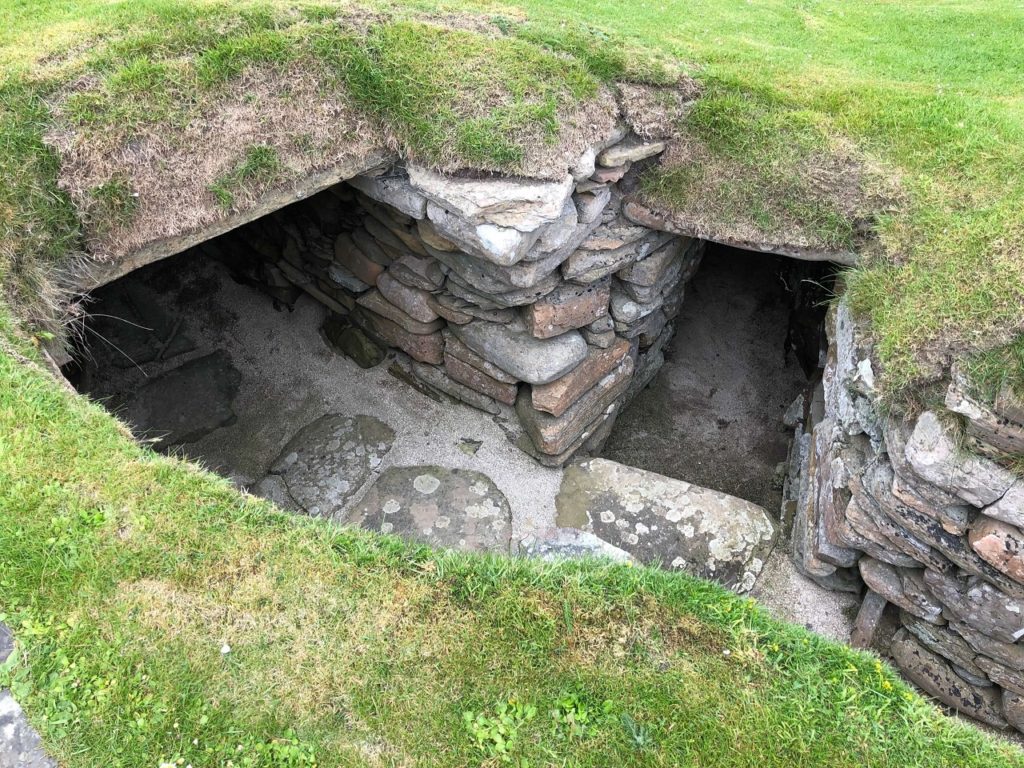
Looking into the houses that have been excavated, you can still see some of the grinding stones, the dressers, hearths, and box beds. It is quite amazing how well these sites were preserved beneath the sand, although it is also unknown how much of the settlement had already been destroyed by the sea. The coastline was much further away during the time period in which the settlement was occupied. And the site is now protected by a man made sea wall.
Two of the houses that have been excavated are from a period about 500 years earlier than the others. It is believed that they were occupied around 2900 BC. Most of the other houses that can be seen today were built over these older ones. The “newer” houses were occupied from 2900-2500 BC. The houses were constructed using local flagstone, clay, and set into midden (or rubbish – think of it like compost) for stability.
All of the houses were designed in a similar way, however, with what has been referred to as a dresser directly across from the door, and box beds on either side. In the older houses, the beds are recessed into the walls, and in the newer houses they protrude into the room. In both the older and newer houses, there is a hearth in the middle that likely provided both heat and light 24 hours a day, and storage units in the floor that are believed to have contained limpet, a snail-like animal used as fishing bait that needed soaking prior to use.
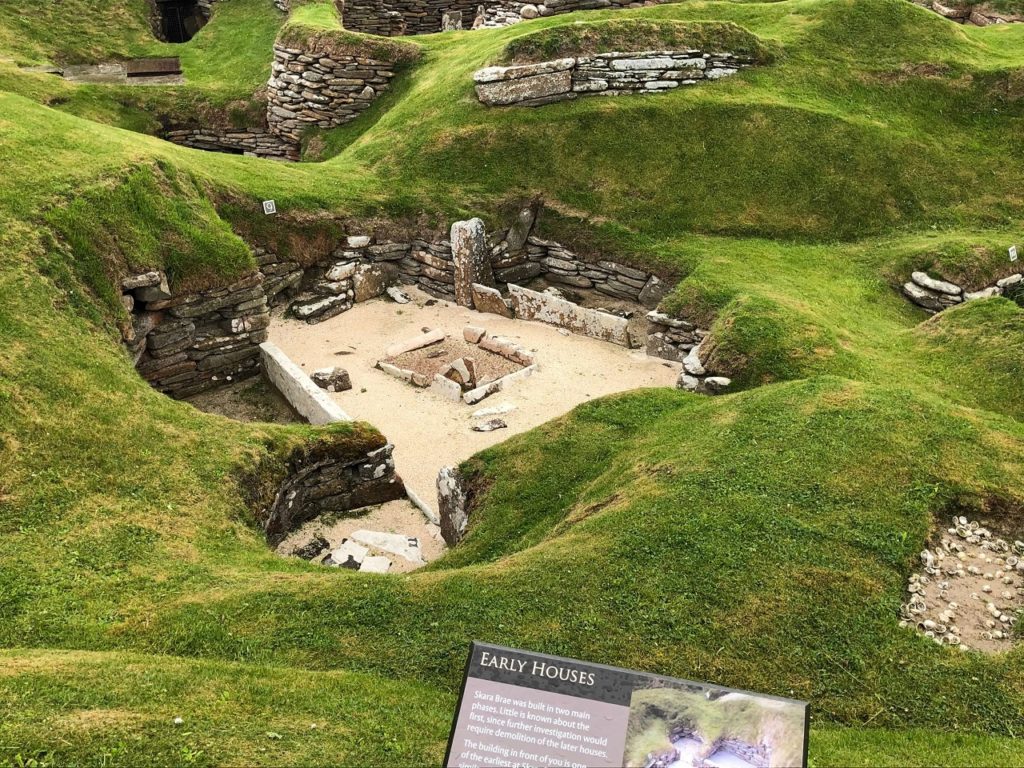
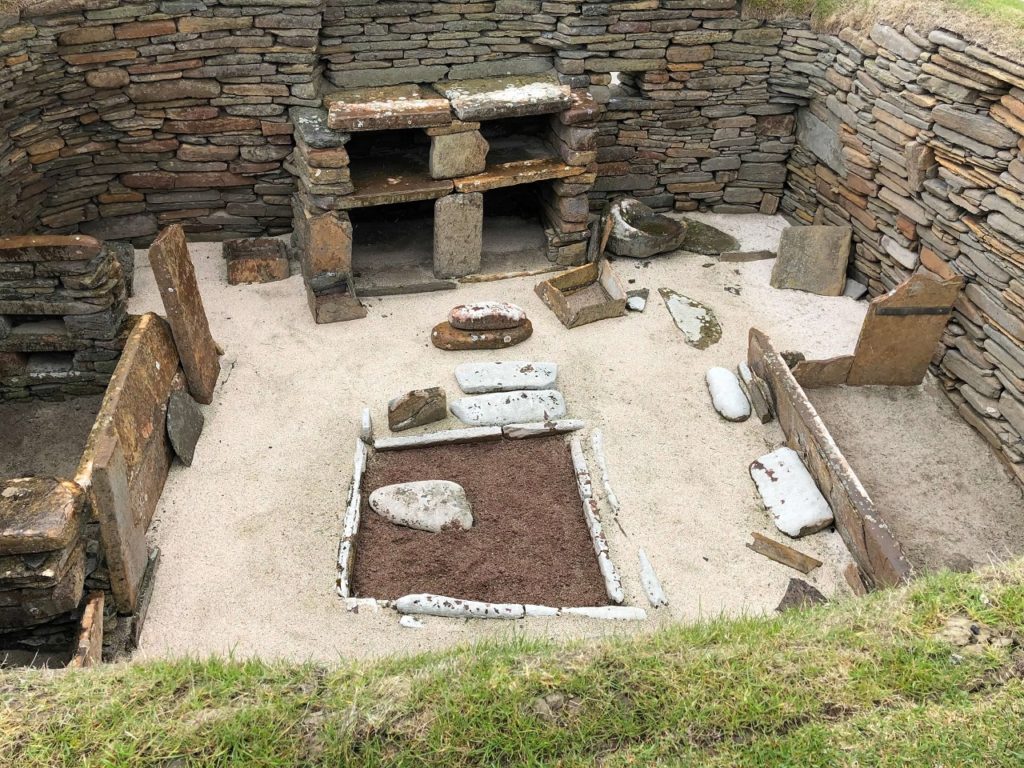
The Workshop building was determined to be such based upon the archaeological findings. It was certainly not a house as it had no beds or dresser. What it did have was a floor covered in chert, which indicates a workshop for industry. The building was also freestanding. It’s walls were thicker than the houses because they were not supported by the midden. It is believed that most of the stone tools, jewelry, pottery and other objects recovered during excavation were likely made in this workshop.
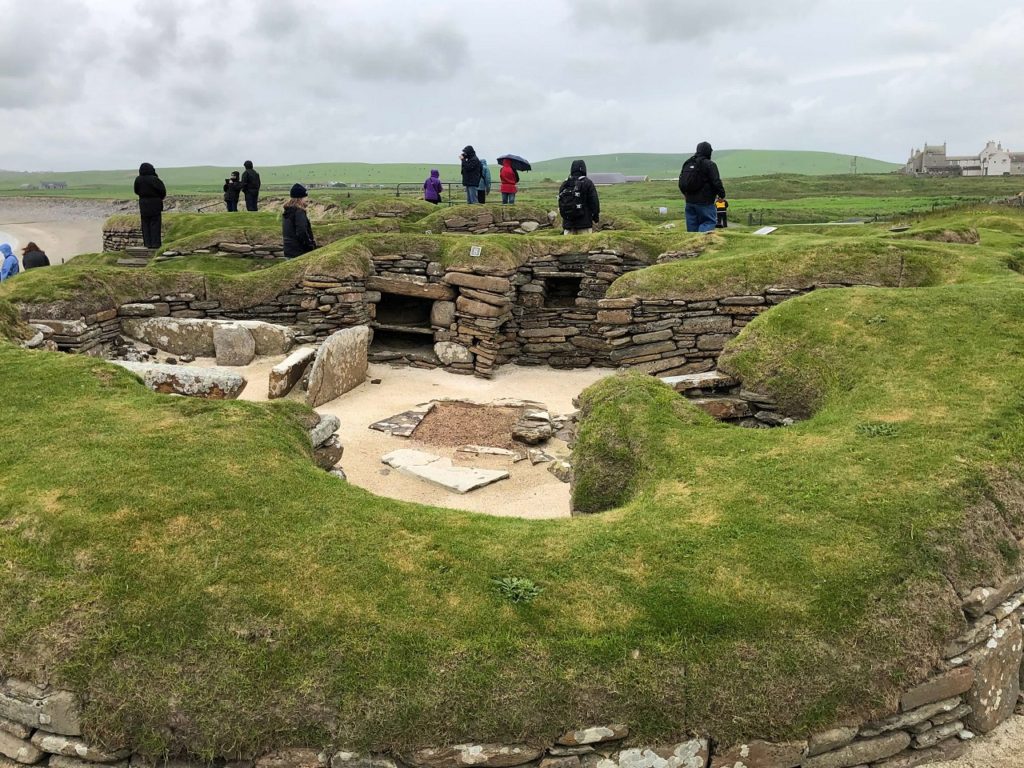
There are several theories about who the residents of Skara Brae were: craftsmen/tradesmen, a religious community, elite upper class, or a combination of the three. We know that they were farmers who raised cattle and pigs based upon the midden on site. They also likely buried their dead in chamber tombs such as the one at Maeshowe (2750 BC) in Orkney. We did not have time to visit that site, but I have been to Knowth in the Boyne Valley in Ireland, and my understanding is that they are very similar.
On our way back to the ferry terminal, we drove by the Stones of Stenness. This stone circle is believed to be the oldest henge in Britain dating back approximately 5400 years to 3100 BC. There are only four of the original twelve stones still standing, and the circular bank of earth can no longer be seen. Unfortunately it was raining, and my photo did not turn out!
We actually stopped at the Ring of Brodgar, another stone circle which dates back approximately 5000 years, built between 2500 BC and 2000 BC. It is the third largest stone circle in Britain at approximately 340 feet across, and 27 of its 60 original stones are still standing. You can walk around this stone circle in its entirety, but you must stay on the designated path and out of the ditch. Again, as with Callanish, we don’t know if this circle was built for religious or time keeping purposes.
As I said before, if you are a history lover, you will definitely want to spend more than one day in Orkney as there is so much more to see. I will absolutely be back one day. I was supposed to be there this summer, but Covid. Some of the other historic sights that you should include on your list, and are on my list for next time include: Maeshowe Chambered Cairn (chamber tomb), Bishop’s & Earl’s Palace in Kirkwall, Broch of Gurness (an iron age village), Brough of Birsay (Pictish & then Viking village), Ness of Brodgar, and the Skapa Flow Museum to name a few!
As always, if you enjoyed what you read, please subscribe to be updated when new posts are published. You are also invited to join our new community on Facebook: Tours, Trips & Travel Tips for History Lovers | by Travel the World History. If you enjoy planning your own travel, feel free to register and use my booking engine. If you are interested in a vacation quote, you can submit your request using this form. And lastly, if you are curious about how I have turned my passion for travel into an income, please reach out here! Thanks for reading! And I will leave you with a “hairy coo” we passed by just for fun!
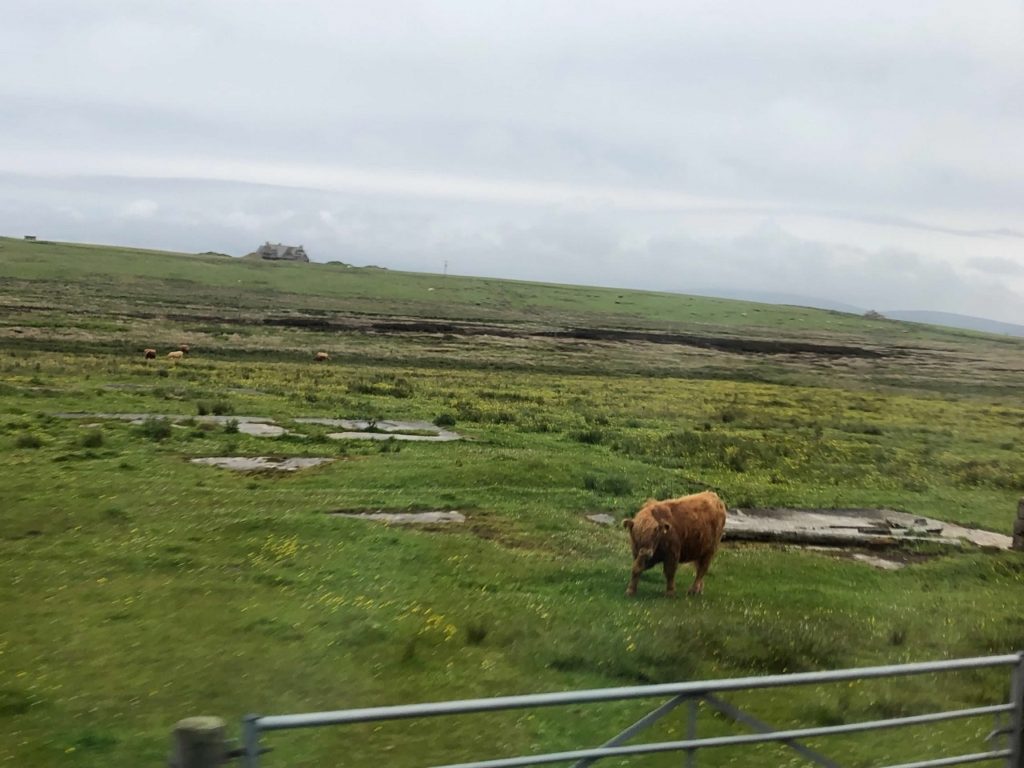
If you missed the previous Scotland posts, you can find them here: Day 1 Day 2 Day 3 Day 4


